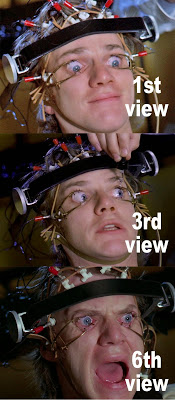The FDA plans to to study the “Impact of Ad Exposure Frequency on Perception and Mental Processing of Risk and Benefit Information in DTC Prescription Drug Ads” (see Federal register Notice).
“Generally,” says FDA, “it has been argued that first exposure to an ad results in attention, second exposure affects learning of the advertised message, and third and subsequent exposures reinforce the learning effects of the second exposure. To our knowledge, the literature concerning ad exposure frequency has not been extended to include specific attention to prescription drug ads.”
To fill that void, FDA’s Office of Prescription Drug Promotion OPDP) plans to examine the effects of variation in ad exposure frequency on perception and mental processing of risk and benefit information in DTC prescription drug ads.
The experimental design calls for volunteers to be randomly assigned to view a prescription drug ad one, three, or six times as part of “clutter reels” embedded in a 42 minute TV program.
My concept of a volunteer participating in this study is shown on the image above.
Guess how many “volunteers” FDA plans to torture in this experiment.
Not only will these poor souls be exposed to multiple iterations of a drug ad, they will also be required to fill out a questionnaire, which is designed to “assess perception, memory, judgments about the ad, intentions to use the medication advertised, and possible moderators of effects, such as need for cognition and demographics.”
Note that study subjects will use a “laptop” to fill out the questionnaire. Laptop? Really? Tell me the FDA doesn’t have iPads!
Whatever! The questionnaire is available upon request and you know I’m requesting one!
BTW, FDA proposed another study back in February, 2014: “Disclosure Regarding Additional Risks in Direct-to-Consumer (DTC) Prescription Drug Television (TV) Advertisements (Ads).” This study will investigate the impact of limiting the risks presented in DTC prescription drug television ads to those that are serious and actionable, and including a disclosure to alert consumers that there are other product risks not disclosed in the ad. For more on that, read “Do TV DTC Ads Overstate Rx Drug Risks? FDA May Make Changes that Put Patients at Risk.“
Meanwhile, listen to this audio snippet and podcast to learn more about overstatement of efficacy in TV DTC ads — a bigger problem, IMHO, than overstating the risks.
| How to Recognize Misleading Claims Made by DTC TV Ads | |
 In this 3.5-minute audio snippet, Adrienne E. Faerber, PhD, and David H. Kreling, PhD, talk about the key results of their content analysis of claims made by TV direct-to-consumer (DTC) drug ads and advise consumers how to recognize potentially misleading or outright false claims — including celebrity endorsements — made by these ads. In this 3.5-minute audio snippet, Adrienne E. Faerber, PhD, and David H. Kreling, PhD, talk about the key results of their content analysis of claims made by TV direct-to-consumer (DTC) drug ads and advise consumers how to recognize potentially misleading or outright false claims — including celebrity endorsements — made by these ads.
Your browser does not support the audio element. Upgrade your browser to one that does You can hear the full interview of Faerber and Kreling here: |
|









![6 Digital Tools at the Center of Healthcare Digitalization [INFOGRAPHIC]](http://ec2-54-175-84-28.compute-1.amazonaws.com/pharma-mkting.com/wp-content/uploads/2021/04/6DigitalTools_600px-100x70.jpg)




